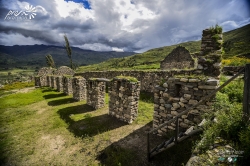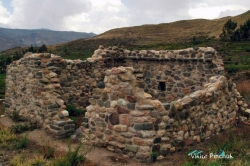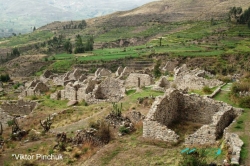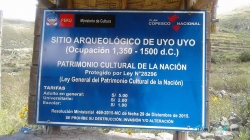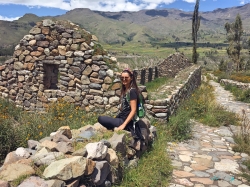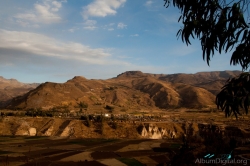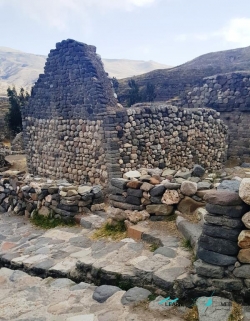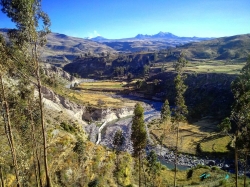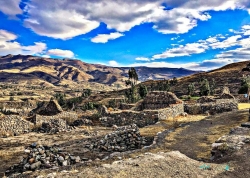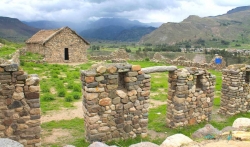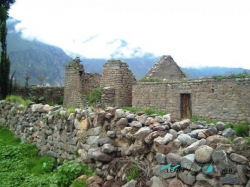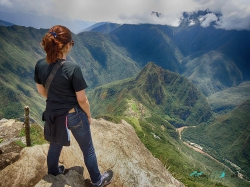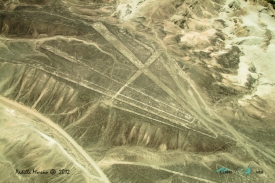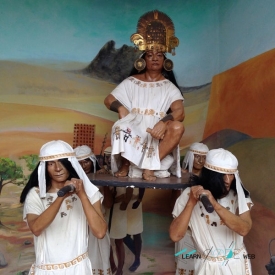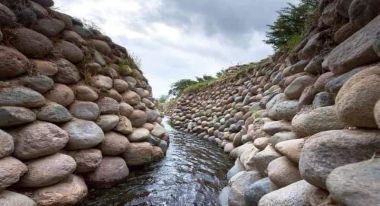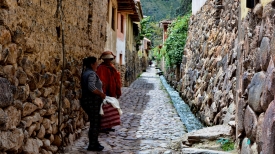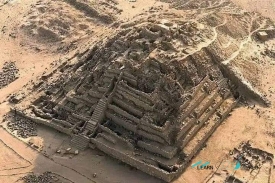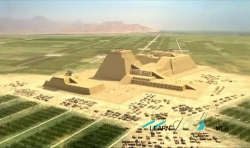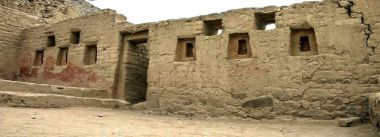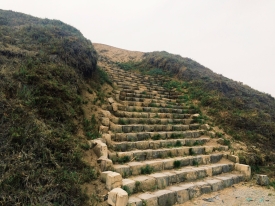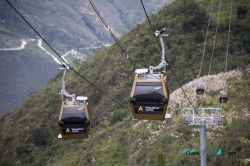ABOUT Uyo Uyo
The Archaeological Ensemble of Uyo Uyo is located within the peasant community of Yanque Urinsaya, between the Pampaqhawana and Quesqa rivers, in the Yanque district, Caylloma province, Arequipa department, in Peruvian territory.
To access this monument, the route begins in the Plaza de Armas de Yanque from where a north-facing path starts for a section of 2.5 kilometers.
The complex has an Inca affiliation, it was built in its current location around 1300 AD. After the arrival of the Spanish, Uyo Uyo was abandoned.
The archaeological complex is made up of four sectors: The urban sector made up of sectors I and II. Sector III or agricultural made up of 26 terraces, and sector IV or cemetery.
Uyo Uyo has a wide space. The walls, roads, buildings, climb the mountain and spread from right and left, in what must have been a formidable citadel.
Those who lived here centuries ago were numerous and from this place they controlled the valley. The walls of its shrine houses and warehouses are high, made of rough stones.
This archaeological group corresponds to the Collawa culture, it is located halfway up a hill, it is a set of typically Collawas buildings with stucco walls burned and painted with colors: yellow and red inside; on the outside there are rows of stones in white and gray colors, today invaded as farmland.
The lithic construction material is the carved and polished quarry stones in the constructions, their rooms are ovoid, rectangular, circular, chullpas.
To access this monument, the route begins in the Plaza de Armas de Yanque from where a north-facing path starts for a section of 2.5 kilometers.
The complex has an Inca affiliation, it was built in its current location around 1300 AD. After the arrival of the Spanish, Uyo Uyo was abandoned.
The archaeological complex is made up of four sectors: The urban sector made up of sectors I and II. Sector III or agricultural made up of 26 terraces, and sector IV or cemetery.
Uyo Uyo has a wide space. The walls, roads, buildings, climb the mountain and spread from right and left, in what must have been a formidable citadel.
Those who lived here centuries ago were numerous and from this place they controlled the valley. The walls of its shrine houses and warehouses are high, made of rough stones.
This archaeological group corresponds to the Collawa culture, it is located halfway up a hill, it is a set of typically Collawas buildings with stucco walls burned and painted with colors: yellow and red inside; on the outside there are rows of stones in white and gray colors, today invaded as farmland.
The lithic construction material is the carved and polished quarry stones in the constructions, their rooms are ovoid, rectangular, circular, chullpas.



